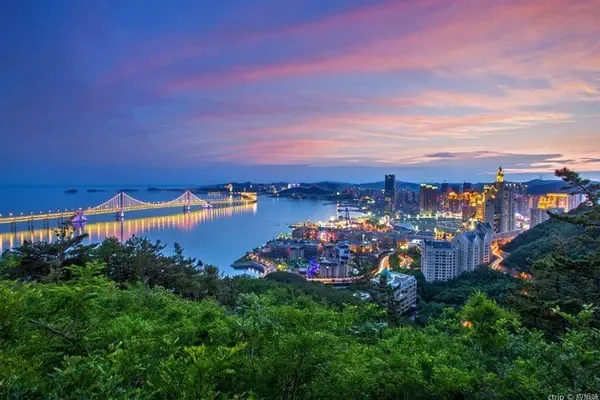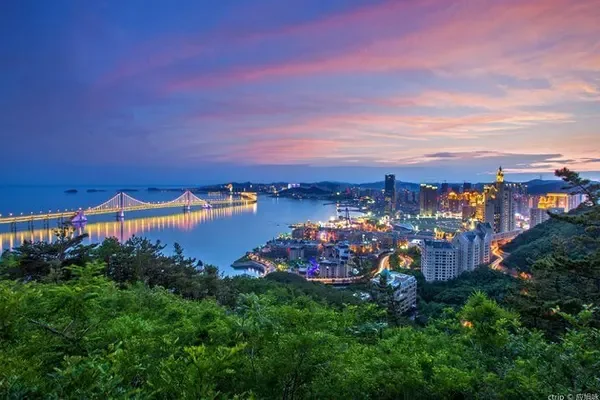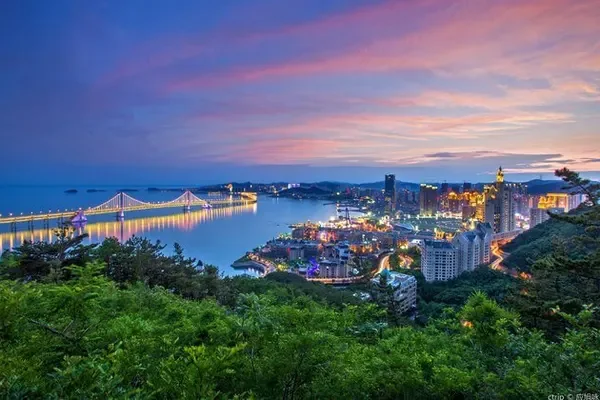Etiquette and customs
The Mongolian people always greet visitors warmly when they meet, whether they are acquaintances or strangers: "He is Saiyinbainu." The whole family, old and young, sit around the guests and ask questions, as if they were at home.
Usually entertaining guests, after drinking milk tea, the generous host always puts sweet butter, milk skin, mellow milk wine, crispy fried fruit and fried rice, milk tea, cheese and "hand-grilled meat" with unique prairie flavor. Put it in front of the guests and invite them to drink and have a full meal. If the host shows special respect to the guests, he often puts the milk jug and wine jug on the khata and serves them out, and sometimes sings some welcoming and friendly songs to persuade the guests to drink. In banquets, especially distinguished guests or ceremonies, sheep mats are often arranged. The Mongolians call it "Ucha", and some also call it "Xius" and "Buhuli". When the guests bid farewell, they often sent the whole family off, pointed out the way, and repeatedly said "Bai Yi Ri Tai!" Ba!" (Safe voyage).
offering hada
Hada is a transliteration of Tibetan. It is often used in greetings, gifts, god worship, New Year greetings and celebrations to express respect and congratulations. This etiquette has a long history. According to "Marco Polo's Travel Notes", the Mongolian people "bring each other gifts made of gold, silver and jade together with white silk cloth during the New Year and festivals."
hand snuff bottle
Handing snuff bottles is an ancient Mongolian custom. As a guest in a yurt, the hospitable host often takes out a small pot that is as delicate as a porcelain bottle and offers it to the guests to smell. This is the snuff bottle filled with snuff. There are also certain rules for handing snuff bottles. If it is a meeting of the same generation, pass the pot with the right hand, exchange with each other, or raise both hands slightly, bow and exchange, then each pour out a little snuff, rub it on the nostril with your finger, taste the smell of smoke, and exchange after tasting. If the elder meets the younger generation, they should bow slightly and pass the pot with their right hand, while the younger generation would take it with both hands, raise each to sniff, and then exchange.
In the custom of the Mongolian people, riding a horse or taking a car to a herdsman's house is a guest. When approaching the yurt, one should ride lightly and slowly so as not to disturb the herds. Before entering the yurt, the whip and stick should be placed outside the door. If they are brought into the yurt, it will be regarded as disrespect to the owner. After leaving the yurt, don't get on the cart or horse immediately, but walk for a while, wait for the owner to go back, and then get on the cart and horse. As a guest in the bag, the host bows to serve the milk tea, and the guest should bow his body and both hands to receive it. The northwest corner of the bag is a place for worshiping the Buddha. When sleeping, you should not stretch your feet to the northwest corner. It is not advisable to use a cigarette pouch or point to a human head. It is not allowed to touch the pot and stove with your feet, and you can't roast your feet on the fire, otherwise it is an insult to the kitchen god. In the yurt, if there is a patient, a rope is tied to the left side of the door of the yurt, and the end of the rope is buried in the ground, which means that the owner cannot entertain guests and visitors should not enter the door.
customs
The most important festival of the Mongolian people is the Chinese New Year. Generally, when the 15th day of the twelfth lunar month comes, people start to make preparations for the Chinese New Year. On the 23rd day of the twelfth lunar month, on this day, the whole family or relatives and friends gather together for food and entertainment to send off the Vulcan.
From the 30th day of the twelfth lunar month to the fifth day of the first lunar month are the happiest days of the new year. After the night falls on New Year's Eve, people gather at the home of the oldest person to start the "Nai Ri" (banquet) on New Year's Eve, and the whole family enjoys "Shou Sui" to the fullest. "Three pots" should be prepared at the New Year's Eve banquet. One pot is a milk tea pot; Sing at least three songs at the banquet.
On the first day of the new year, when we start to pay New Year greetings, we must first sacrifice to the sky. One or two old people or women stay at home, and the rest wear festive costumes, carry a silver pot of milk tea and milk food, and come to the obo made of snow, sprinkle the offerings into the lit fire, and then kowtow to pray for good weather. , People and animals are safe. Then came New Year greetings within the family. The younger generation greets the elders and bows down, the old man holds a khata in his hand, the middle-aged man bows down with a small piece of silk, and the young man bows down with a long strip of brightly colored silk. The elders give food and money to their children and grandchildren.
After the New Year's greetings in the family, people first go to the home of the oldest person. When entering the door, they advance in order of age. After the New Year's greetings, at least two eulogies and three songs are presented. The milk food plate recites the words of congratulations. After the recitation, the singer puts the hada into his arms, and takes the milk food plate for other singers to taste.
apparel
Boots: Mongolian boots are divided into riding boots and Mongolian boots, and riding boots are divided into cotton boots and single riding boots. Made of black cowhide, sometimes purple, straight and delicate, young people like to wear riding boots. Mongolian boots (scented cowhide boots) have slightly upturned tips. The sides of the boots usually have patterns and embossed patterns. Some of them are lined with leather and some are lined with felt. The boots are wide and can be covered with cotton socks and felt socks.
Robes: Mongolian men, women and children like to wear robes. This kind of robe has wide sleeves and long sleeves. The lower end is generally not bifurcated, the collar is higher, and the buttons are on the right side. The neckline, cuffs, and edges of the robe are often decorated with beautiful lace, and the color of the robe varies from place to place, person to season.
Belt: It is necessary to wear a Mongolian robe, some are made of cloth, some are satin, five meters long, and the color is coordinated with the robe.
Jewelry: Women in pastoral areas generally don't wear hats, and usually wrap their heads with long red and green silk. Men usually wear peaked caps in summer, and sheepskin or fox fur hats in winter. Mongolian women's jewelry is used for decoration on the head during festivals, festive banquets, and visiting relatives and friends. There are many types of decorations, and the materials are also different for rich and poor. The more exquisite ones are mostly made of agate, pearls, gems, gold and silver.
diet
The Mongolian diet can be roughly divided into three categories, namely meat, milk, and grain. Three meals a day, two thin and one dry, generally drink milk tea at noon in the morning, make fried rice, milk food, hand-steaked meat, and boil mutton noodles and eat steamed buns in the evening.
Meat: Beef and mutton are the most common and favorite food of Mongolians. Especially willing to eat "hand-steaked meat" of mutton. There are many ways to eat mutton. Common and well-known "hand-grilled meat" and "whole sheep", also known as "yangbeizi".
There are three main types of beverages: Milk tea is also called Mongolian tea. It is the favorite drink of the Mongolian people. They drink milk tea for three meals a day; yogurt: the fermented mare's milk "Qige" and the fermented cow and goat milk "Tariga" can dissipate heat and quench thirst, and are rich in nutrition ; Milk wine, also known as Mongolian wine. The fermented milk is put into a pot and boiled slowly, and after distillation, it becomes a transparent and mellow milk wine.
Dairy food: In Mongolian, it is called "Chagan Yide", which means pure and auspicious. There are six main types of dairy food: white oil, butter, milk skin, milk tofu, cheese, and milk fruit.
Qige: "Qige" sour kumiss (commonly known as kumiss) is a precious drink for the Mongolian people in various gatherings and feasts. At the Nadamu Conference, Qige is always drunk to celebrate the bumper harvest and good luck in animal husbandry. According to the records of "Marco Polo's Travels", Kublai Khan entertained guests with drinks such as Qige and camel milk in golden bowls at the imperial banquet.
Mongolian wine: Mongolian wine is one of the main drinks of the Mongolian people. Mongolian wine is extracted from milk, so it is called "milk wine". Mongolian wine is thick and mellow, colorless and transparent. , men, women and children can drink it. The Mongolian people have a long history of making "milk wine". According to historical records, Temujin drank this wine every auspicious day when the Mongolian Boerjijin Temujin founded the country in 1206, adding to the festive atmosphere. In 1271, Kublai Khan established the name of the country as Yuan, and it was especially rich in Mongolian wine. However, after more than 700 years, the original process of producing Mongolian wine has not changed.
live
A yurt is a canopy-style dwelling with a circular spire. Usually covered with one or two layers of wool felt. Yurt is the name of the Manchus for the houses of Mongolian herdsmen. "Bao" means "home" and "house" in Manchu. In ancient times, it was called "Qionglu" and "felt bag".
There are two types of yurts. One is used in pastoral areas in summer and is mobile, and the other is semi-fixed in winter camps. The transfer package is called "Uergogel" in Mongolian.
The yurt has little resistance in heavy snow, no snow accumulation, and no water on the top of the yurt when it rains. The door of the bag is long and small and connected to the ground, so the cold air is not easy to invade. The louver Hana of the yurt is made of several equal thin wooden sticks and cowhide ropes connected together. When it is pulled apart, it will form a circular yurt wall. There is an opening at the top of the bag, which is a skylight, which can ventilate smoke and light.
production customs
Horses are an indispensable means of transportation for herdsmen. Horses are required for grazing, visiting relatives and friends, and going out for errands. The physique of the horse is not only strong and strong, but also extremely resistant to extensive feeding, and is known for its endurance and hard work. The daily trip can reach 100 to 150 kilometers. Grassland herdsmen, men, women, old and young, can ride horses.
Lele cars, also known as "big sample cars", have taller wheels and the longest diameter is 1.4 to 5 meters. The axle wheels are mostly made of birch, elm, and hard miscellaneous wood, and the shaft is long, generally equivalent to the length of half the body except for the body. It can pull water, carry yurts, transport fuel, be used for weddings and funerals, and is suitable for traveling on grasslands and deserts.
Warehouse car, a wooden rectangular cabinet with a cover and a door is placed on the car body, and the outside of the cabinet is covered with iron sheets, or wrapped with raw cowhide, which can prevent wind, water and moisture. Food, meat and other daily necessities can be stored in the cabinet.
Pulling the water cart, a large wooden barrel or iron barrel is fixed on the cart, which is used to pull drinking water and store water at ordinary times.
Camels are the main means of transportation in desert areas. Especially in winter, herdsmen prefer to ride camels for grazing. Riding is warmer, and they can endure hardships and stand hard work. They can live without feeding grass or drinking water for a few days, and travel in winter. The transportation mainly depends on camels. In the desert, groups of camels can often be seen walking in single file on the ocean-like sandy land, so camels are called "desert ships".
Sacrificial customs
Aobao: It was originally a sign of roads and realms, and it played the role of guiding, distinguishing directions and administrative divisions. The time for offering sacrifices to Obo is mostly in June, July and August when the water and grass are abundant and the cattle and sheep are fat. During the sacrificial ceremony, Aobao puts branches, and hangs colorful cloth strips or paper flags on the branches, and scriptures are written on the flags. There are blood sacrifices, wine sacrifices, fire sacrifices, jade sacrifices, etc. in the rituals.
Blood sacrifice: It means slaughtering the cattle, horses, and sheep that one feeds, and enshrining them in front of Obo. This kind of sacrificial method has been around for a long time, and it still exists in different places. According to legend, in the nomadic era, Mongolian herdsmen regarded cattle, horses, sheep and other livestock for their own survival as gifts from heaven and earth. Therefore, when worshiping the gods of heaven and earth, they had to slaughter livestock in return.
Wine Festival: It is to sprinkle fresh milk and butter drop by drop in front of the "Obao" to pray for peace and happiness. This custom of offering sacrifices to gods has also existed for a long time. It is called "wine injection ceremony" in (Secret History of Mongolia), and it can still be seen in some places today. It is said that it means that God not only eats meat, but also drinks wine and milk.
Fire sacrifice: It is to burn a large pile of dry branches or a large pile of cow, horse and sheep dung in front of Obo. During the sacrifice, each household approached the fire, recited their family names, offered sacrifices, and threw the whole "Buhulmaha" lamb into the fire to burn. The more prosperous the fire, the better. The Mongolian people believe that fire is the cleanest, and all evils can be driven out with fire.
Jade Sacrifice: Jade was expensive in ancient times, and it was often an offering to gods. In the past, when the Mongolian people sacrificed Obo, they also had this kind of ritual sacrifice. Now no one uses jade to sacrifice Obo.
wedding
One of the Mongolian wedding customs, marriage is usually the day before the wedding day. In a joyful atmosphere, the groom wears a gorgeous Mongolian robe, ribbons around his waist, a round red tasseled hat, high leather boots, and a bow and arrow. The groomsmen and congratulators also wear festive costumes. Riding on the horse together, carrying floats and gifts, went to the bride's house to get married. When the married person arrives at the bride's house, she first goes around the yurt for a week, and presents a "door-knocking sheep" and other gifts to the bride's house. Then, the bridegroom and best man hold hada and fine wine in their hands, toast to the bride's parents and elder relatives one by one, and bow down. After the ceremony, the married couple sits down for dinner. In the evening, a feast of sheep and five forks is set up, and a traditional ceremony of seeking fame and fortune is held. In the early morning of the next day, when the married couple set off, the bride was carried on the float by her uncle or uncle. The groom rides around the bride's float three times on horseback. Then, those who get married and those who send off their relatives set off together to leave.



